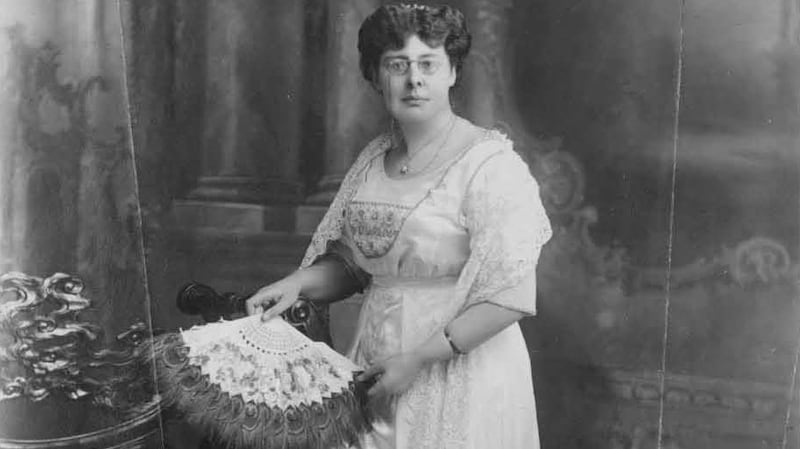Sports journalist, travel writer, novelist, coffee and tobacco plantation owner, explorer, photographer: Antrim-born Beatrice Grimshaw made an independent living by these varied means, flouting her parents’ expectations that she follow a respectable career in teaching.
In her early 20s, she left Belfast for Dublin, converted to Catholicism, claimed the world record for women’s distance cycling, and became sub-editor of the Irish Cyclist.
Quickly becoming bored with the “loathsome parties” of fin-de-siècle Dublin during her self-described “flapper days”, in 1903 she traded her writing skills for free passage to the South Pacific, promoting tourism on behalf of the Union Steam Ship Company of New Zealand. She played a key role in the development of tourism in the South Pacific.
In 1908, the Australian government commissioned her to publicise and promote Papua for colonial settlement; the territory had been granted to Australia by the British two years earlier. She was to remain in Papua for the next 30 years, publishing almost 50 books - fiction, travel writing, and popular romances. Writing was her livelihood, and she knew how to craft a tale; her books were best-sellers in Australia, the United States, and England.
“Below the equator is the world of the South, and here anything may happen, for here the new and the wild and the untried countries lie, and here, moreover, you shall come upon unknown tracts and places in yourself, on which, if you had stayed within sound of the roaring throat of Piccadilly, no sun had ever shone.” - Beatrice Grimshaw, From Fiji to the Cannibal Islands (1907)
Grimshaw’s childhood imagination was fired by Swiss Family Robinson and Gulliver’s Travels, and the effusiveness of her early writing indicates the grip the South Pacific exerted on her. She constructed the vast, diverse region as a pre-industrial paradise, writing in Isles of Adventure (1930), “it is still 1860 or 1760, which you like, over a great part of the Pacific”.

To her, the grey regimen of European life was unbearable, and she dedicated In the Strange South Seas (1907) to “The Man Who Could Not Go … the elderly, white-waistcoated city magnate, grave autocrat of his clerkly kingdom”.
While it was Grimshaw’s task to encourage British settlement in the Pacific, she was honest about the realities of island life. She would not recommend the more inaccessible islands to “the elderly round-the-world-tourist, doing the Pacific in orthodox style”.
She was one of the first European women to explore the Papuan interior, following the Sepik and Fly Rivers inland in the company of Catholic missionaries. For her, the Fiji-Honolulu-Samoa route was a “beaten track”.
Her emphasis on Papua’s challenges was a veiled self-compliment: “Real exploring is for the very few, the supremely fit; for the strongest man at his best, and for those who have funds running into thousands … African exploration is a mere flapper’s game compared with the difficulties of Papuan travel.”
While Grimshaw was certainly representative of the late 19th century “new woman”, many of her characters were strong women who embraced freedom, and she was delighted to be treated as a “male chief” on Samoa, she was no feminist.
She quipped in 1907, “women are not as clever as men - let the equality brigade shriek if they like - but neither are we as stupid.”
Neither can her paternalistic and occasionally racist attitudes be overlooked, and in the tone of many a Victorian explorer, she proudly related that she obtained - “never mind how” - a Malakulan skull.
Grimshaw’s eccentricity accentuated her celebrity. She lived for two-and-a-half years on a “desert” island, Sariba, in a vernacular house of her own design, and visitors to her boathouse in Port Moresby reported the sound of crocodiles snapping in the water at night.
In 1933, she and her brother purchased Errol Flynn’s tobacco farm; this short-lived venture preceded her removal to Bathurst, Australia, where she died in poverty in 1953.
This Extraordinary Emigrants article was written by Dr Angela Byrne, Department of Foreign Affairs and Trade Historian-in-Residence at EPIC The Irish Emigration Museum in Dublin's Docklands. Learn more about Irish mariners at the exhibition, 'Across the Waves: The Seafaring Irish' at EPIC from March 15th to April 12th. epicchq.com

















